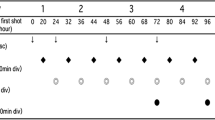Abstract
Interleukin-3 (IL-3) is a glycoprotein produced primarily by activated T-lymphocytes. As a hematopoietic growth factor it affects the proliferation, maturation, and survival of progenitor cells of the myeloid, erythroid, and megakaryocyte lineages. Initial studies in cancer patients with normal bone marrow using IL-3 doses of >5 μg/kg daily produced a doubling of the neutrophil count within 2 – 3 days and that of platelet counts by days 10 – 12. Phase I – II clinical trials have examined the response to IL-3 in various clinical states, and ongoing phase III studies are currently assessing the clinical relevance. In the treatment of relapsed lymphoma, small-cell lung cancer, and breast and ovarian cancer, IL-3 at doses of 5 – 10 μg/kg daily given mainly subcutaneously for 5 – 10 days has been shown to maintain chemotherapy schedules while preserving adequate granulocyte and platelet numbers in the peripheral blood. At these doses, side effects were uncommon. The translation of these observations into clinical phase III studies has been disappointing, with no clear-cut clinical advantage being observed in the treated group. This reflects the relative lack of myelosuppression seen with most current regimens for solid tumors. The role of combined treatment with IL-3 in association with granulocyte colony-stimulating factor or granulocyte-macrophage colony-stimulating factor after cytotoxic treatment has yet to be established. However, it has been shown that they may act synergistically, resulting in significantly higher numbers of progenitor cells in the peripheral blood than when either is used alone. Combinations with IL-6 are also under study, as is the use of “cocktails” for ex vivo expansion of progenitors. This latter approach would allow single, small collections to be used for multiple infusions of progenitors and could support significant dose-intensification regimens by relieving myelosuppression. It is clear that the place of these newer cytokines in current treatment remains to be clarified.
Similar content being viewed by others
Author information
Authors and Affiliations
Rights and permissions
About this article
Cite this article
Newland, A. Is interleukin 3 active in anticancer drug-induced thrombocytopenia?. Cancer Chemother Pharmacol 38 (Suppl 1), S83–S88 (1996). https://doi.org/10.1007/s002800051045
Issue Date:
DOI: https://doi.org/10.1007/s002800051045




